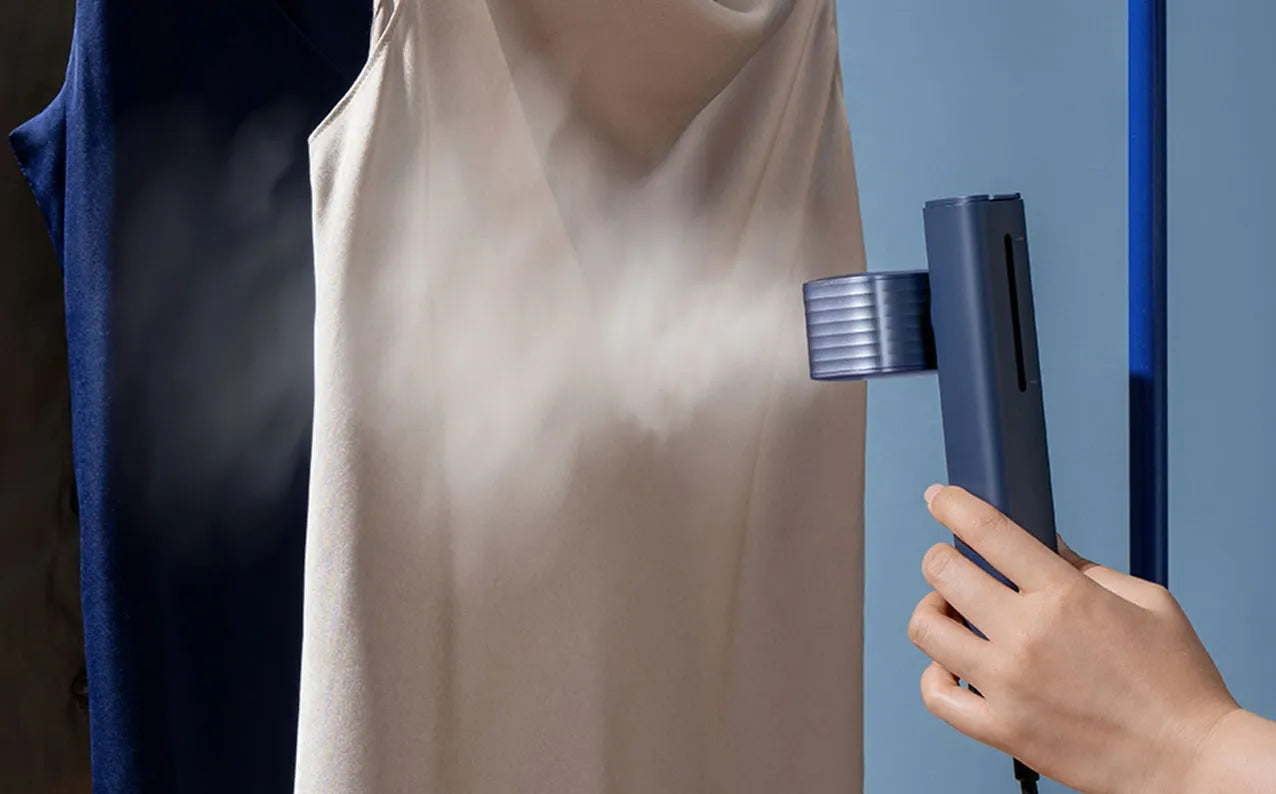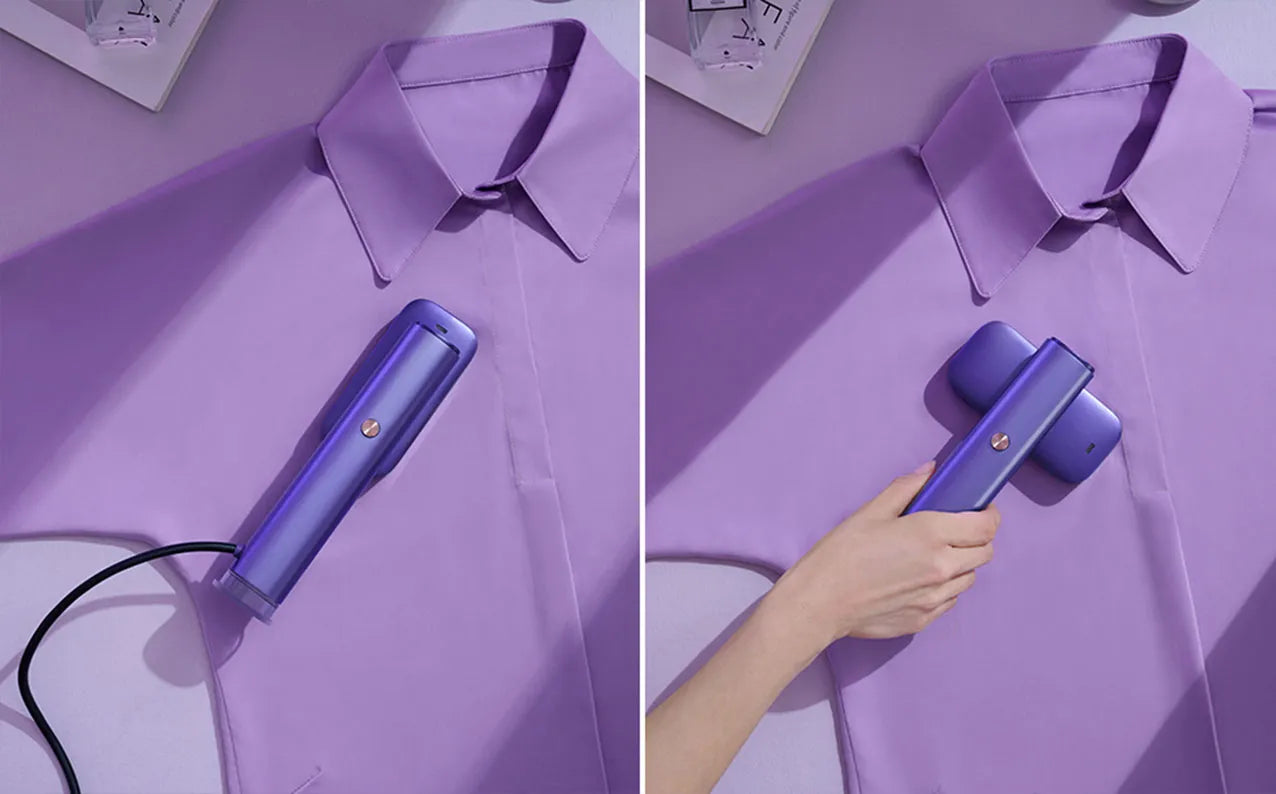A little-known daily secret of an information technology consultant: How I use a best steamer for clothes to enhance my daily efficiency and appearance
Over the years I've picked up one habit: I hate wasting time on needless waiting or repeating small, avoidable tasks. Whether I'm deploying a server at 3 AM or packing for a client visit, I want things to run smoothly, respond quickly, and not break. A best steamer for clothes turned out to be one of those unexpectedly handy little efficiency tools in my life.
In the past, I also used a traditional iron, but as someone who often travels and attends numerous meetings, I didn't have much time to lay each shirt flat on the ironing board and repeatedly push it back and forth. In the fast-moving U.S. tech world, a rumpled sleeve can be the sort of small thing that changes a first impression.
From the perspective of a technical consultant: I examine the five key indicators of the best steamer for clothes
Every time I choose the equipment, the logic in my mind is no different from the configuration I select for the server. When I'm choosing gear, the logic is the same as when I configure a server. I treat a best steamer for clothes like a small system: it needs steady output, fast response, low failure rates, and easy maintenance. Therefore, I will focus on looking at the following five parameters:
Heating time (response speed)
Like boot time on a machine, I don't want to wait around for a best steamer for clothes to warm up in the morning. Good handheld steamers typically deliver stable steam within 15–30 seconds — that tiny window matters when I'm rushing to the airport. Once, after taking a shower at the hotel, I found that my shirt was wrinkled like a crumpled document. I took out the handheld device, plugged it in, hung up my shirt, and 15 seconds later, the steam came out. It was done in two minutes, and the entire shirt looked as if it had just been sent to the dry cleaner.
Steam volume and penetration power (processing efficiency)
For someone like me who often wears thick cotton shirts and suit jackets, unstable steam output is a major drawback. Some models blast steam at first, then peter out after a couple of minutes — like a Wi-Fi signal that drops in the middle of a demo, it's maddening. I prefer models with a power rating above 1000W and stable continuous steam output. They can quickly loosen the fibers and do not require repeated treatments for the same crease.
Water tank capacity (runtime)
This is similar to the battery capacity of a laptop. If the water tank is too small, you'll have to refill it frequently while doing the laundry, which greatly disrupts the rhythm; if it's too large, it will affect portability. On trips I carry a 100–150 mL portable best steamer for clothes — about 3.4–5 fl oz, enough for 1–2 outfits. At home I use an upright with 250 mL+ capacity (about 8.5 fl oz+) and batch the weekend clothes in one go.
Weight and Ergonomics (Operational Comfort)
The job of an information consultant often involves standing for long periods to give presentations or moving around with equipment. My wrists have become unable to tolerate the "heavy" design. If a handheld best steamer for clothes weighs more than about 1.1 lb (0.5 kg), I usually won't consider it. I attach great importance to the distribution of the machine's center of gravity, the angle of the handle, and the design of the nozzle. These directly determine whether you can handle three shirts in one go with ease.
Safety and Anti-Dripping (System Stability)
Just as I don't tolerate random program crashes, I can't accept a best steamer for clothes that drips or suddenly spits water. A good drip-proof and leakage-proof design not only prevents water stains from dirtying clothes, but also protects sensitive fabrics such as silk or chiffon.
Handheld vs. Stand-up: Choose like you choose a device architecture
I often use this analogy to explain it to my colleagues:
A handheld best steamer for clothes, like a laptop, is flexible and portable — great for short trips and quick touch-ups. An upright steamer is more like a fixed workstation: stable, efficient, and better suited to handling larger loads. I travel a lot on business, so the handheld model is my main choice. The standing model is kept at home as a "weekend sorting system".
For example, when I flew to New York for a tech conference, I tucked a lightweight handheld best steamer for clothes into my suitcase. At the hotel I hung my suit jacket on a hanger and in two minutes the worst of the wrinkles were gone. Back home I'd use the upright with the large water tank to steam five or six shirts in one go — like running an automated script.
Proven tricks I use to make steaming easier
These are tricks I've learned over the years — newcomers usually miss these small but useful details:
Shake the garment gently before steaming — that little shake opens the fibers so the steam works faster and more evenly.
For stubborn creases (cotton is the worst), I steam from the inside out — two gentle passes inside usually beat blasting the outside with steam.
Keep the steamer upright — handhelds can spit if tilted flat. Look for devices with solid anti-drip engineering; some portable options (a few from Nesugar among them) cope with angle changes without leaking.
I use filtered or deionized water when I can, and I rinse the tank with white vinegar monthly — that simple habit keeps the nozzles clear and the best steamer for clothes running reliably.
My decision-making process when choosing a steamer
People often ask how I pick a best steamer for clothes. My process is simple — not unlike choosing IT gear:
Define the use case: is it mostly for business travel, or primarily for home and family use?
Rank the priorities: for me it's heat-up time first, then steam output, then weight, and finally water-tank size.
Read user feedback closely: I pay extra attention to negative reviews because they often point out recurring problems.
Try before you buy if possible: hold one, feel the balance. Specs only tell part of the story.
Check after-sales service and parts availability: replaceable tanks and easy-to-find accessories save hassle down the road.
Newer brands such as Nesugar are worth a look.
Lately I've noticed makers focusing on faster heat-up, lighter weight, and anti-drip features. Some Nesugar models, for example, prioritize portability and quick starts — handy for travel. I won't endorse any brand blindly, but if you value a smooth experience, pick a model that nails the little details.
Summary: Don't underestimate this little machine — it does more than just smooth fabric.
Most mornings as an IT consultant start with me pulling on a crisp shirt. Presenting a system or walking into a meeting, wearing something tidy feels part of the job. A best steamer for clothes is like setting up an efficient workspace — it frees you from small, repetitive chores so you can focus on the real work.






